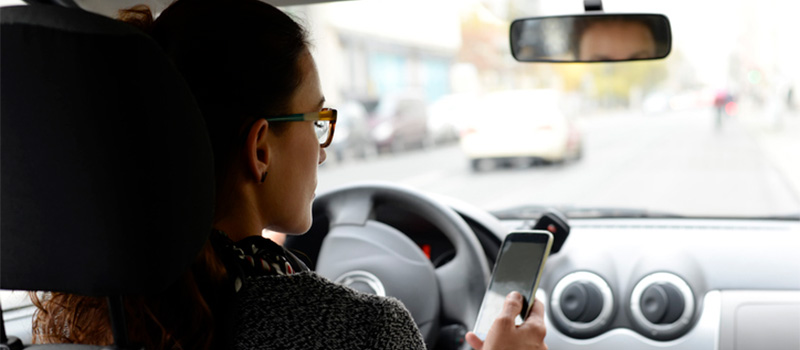Five Bad Driving Habits That Everyone Should Break
Five Bad Driving Habits That Everyone Should Break

Five Bad Driving Habits That Everyone Should Break
In 2021 alone, 42,915 people died in motor vehicle accidents. While some accidents are unavoidable, many accidents are caused by poor driving habits and avoidable mistakes.
These poor driving habits are things that almost all of us have been guilty of at some point on the road, but they're also habits that everyone should strive to break. In the spirit of making the highways a safer place to travel, let's take a look at five of the worst driving mistakes and habits and how you can avoid them.
1. Tailgating
Rear-impact collisions are one of the most common types of traffic accidents, and following too closely behind other vehicles is a major reason why these collisions occur. A safe following distance between you and other vehicles will depend on how fast you are traveling. This is why it's recommended that drivers follow the "three-second rule" to determine if they are leaving enough space to avoid a collision if the vehicle ahead of them comes to a sudden stop. The three-second rule states that at least three seconds should go by after the vehicle in front of you passes a certain point (such as a road sign) before you pass that same point. If you are following closer than this, you may not have time to avoid a rear-end collision if the vehicle in front of you comes to an unexpected stop.
2. Distracted Driving
Whether it's texting, doing your makeup, or getting a little too wrapped up in a conversation with one of your passengers, distracted driving can be dangerous. According to the NHTSA, distracted driving claimed 3,522 lives in 2021. For the safety of yourself and everyone else on the road, make sure that you keep your focus on what's important at all times when driving.
3. Braking Too Hard and Too Often
Your vehicle's brakes are its most important safety feature, but they should only be used when necessary. Sudden, unnecessary hard brakes can easily cause rear-end collisions, while riding your brakes can cause excess strain that will reduce how long they last.
4. Failing to Signal
Turn signals let other drivers know what your intentions are so that they aren't caught off guard by a sudden maneuver, but far too many people fail to use them. Anytime you plan to turn or change lanes, you should use your turn signals at least 100 feet in advance.
5. Rubbernecking
Rubberneck is defined as stopping or slowing down to look at crashes, construction, or other objects of interest on the side of the road and is a form of distracted driving. In addition to increasing the potential for collisions, rubbernecking can also slow traffic further during events when it is likely to already be slowed down. Let the authorities on-scene handle whatever happens to be going on, and don't let it distract you from safe driving.
Content on this page is designed for general information and/or entertainment purposes. It is not intended to provide legal or any other type of advice and is not meant to be a thorough discussion of every issue that a person should consider or may encounter. Unless expressly referenced, we are not affiliated with any company or app that may be referenced herein and we do not endorse them. We are not responsible or liable for the user's reliance on this content or for the availability of links to other websites or resources, or for advertising, products, services or other materials on or available through these websites or resources. Any reference to third party rates or products is for identification only and is subject to change without notice.
